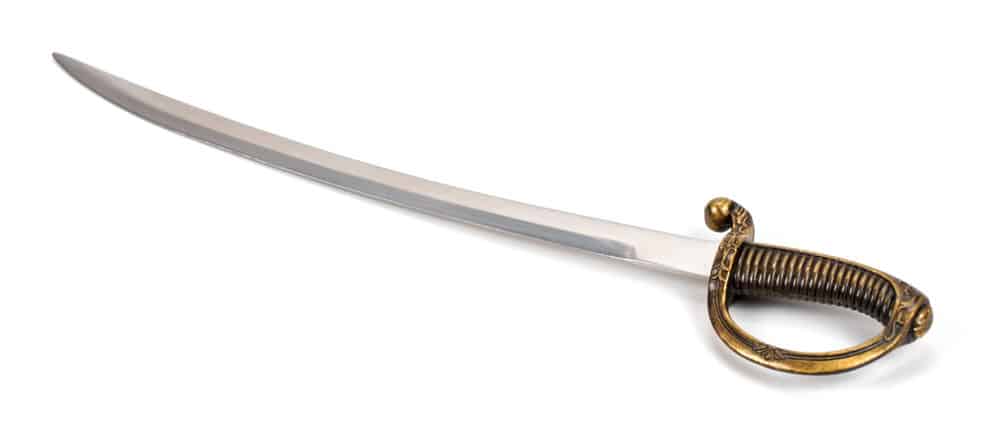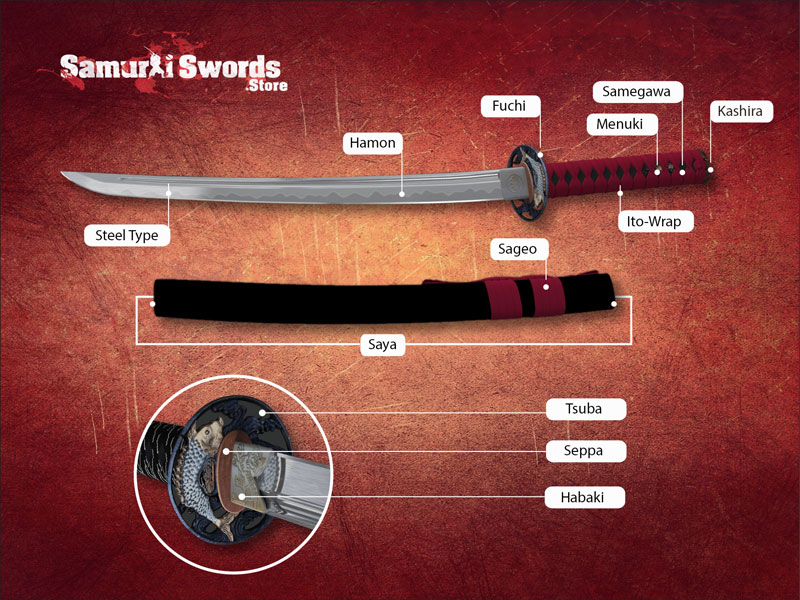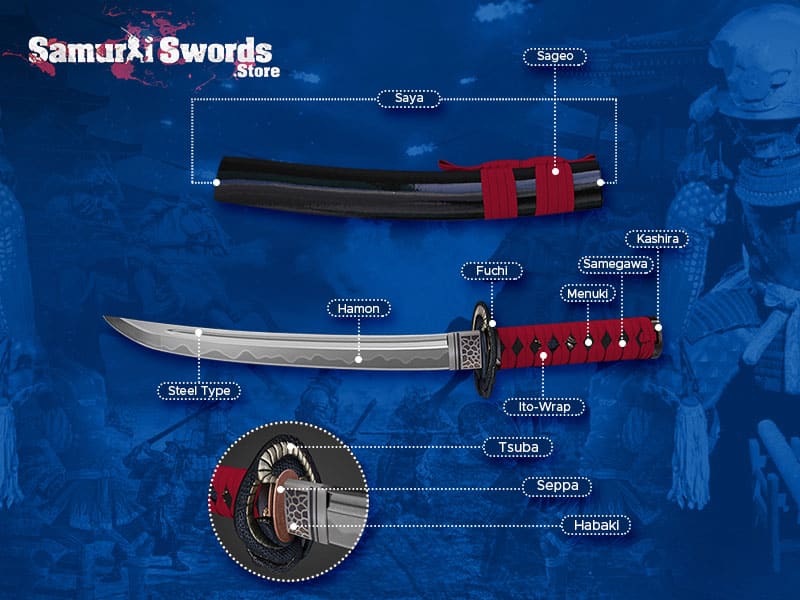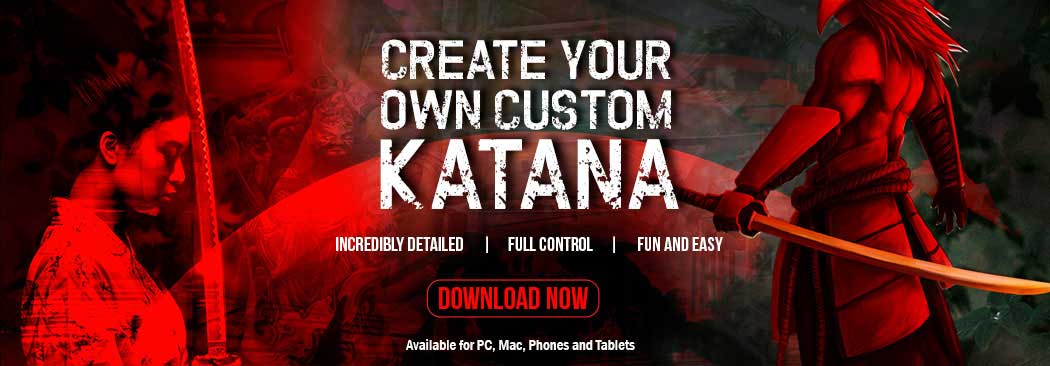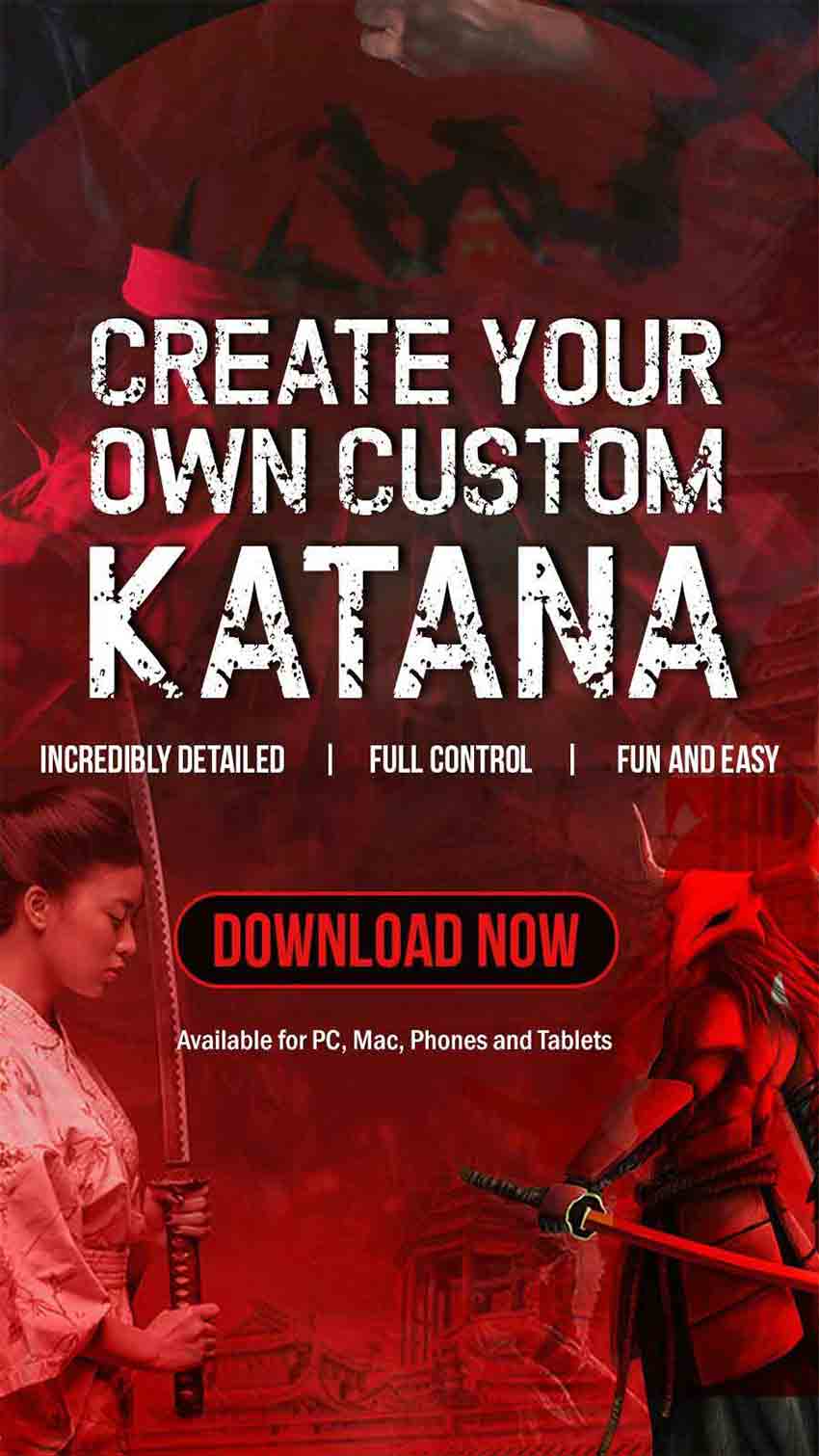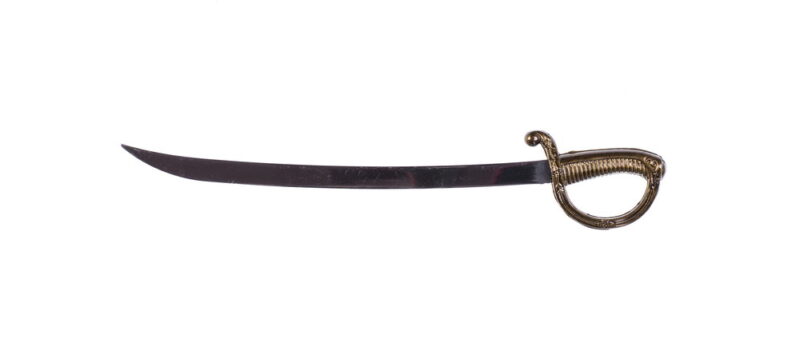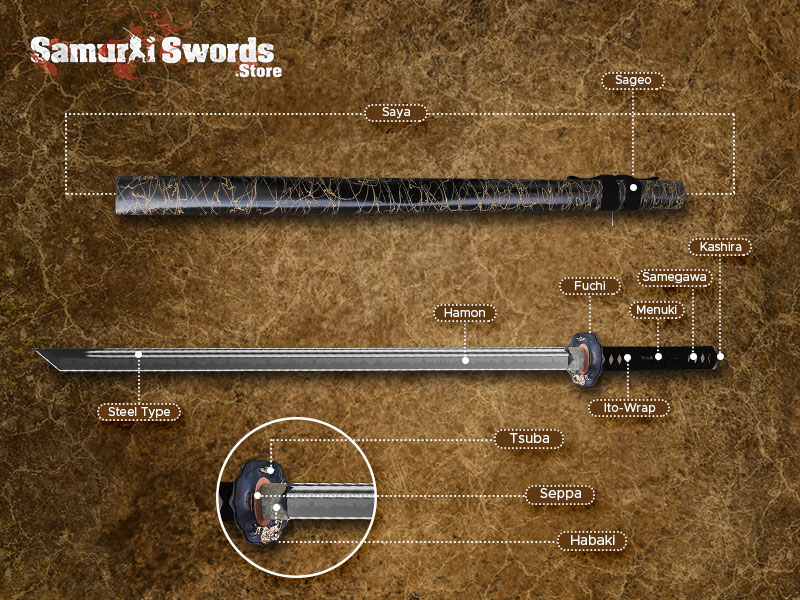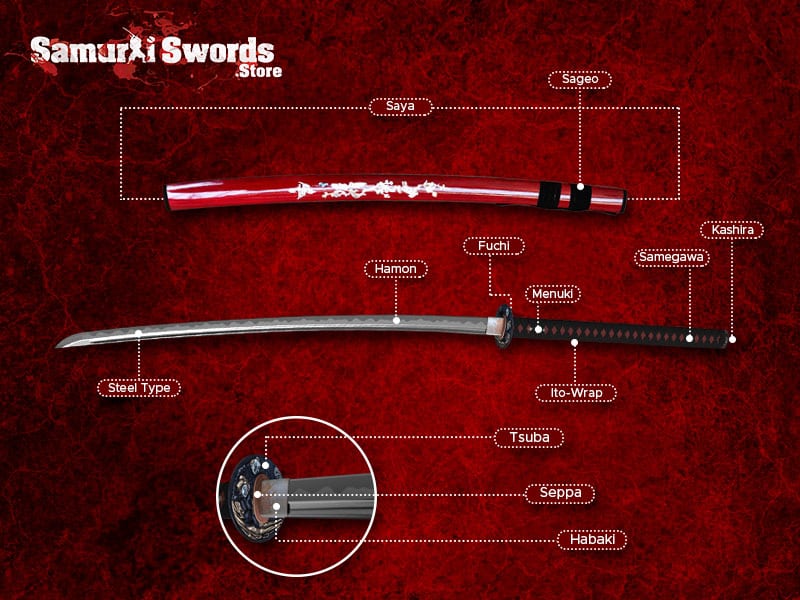Types of Swords
Sabre
Sabre
The saber or sabre sword is a special kind of backsword that features a curved blade and it is generally linked with the light cavalry from the early Napoleonic and Modern era.
Originally, this weapon was associated with the cavalry of Central-Eastern Europe namely the Hussars yet it eventually became a highly popular weapon in the Western part of Europe during the Thirty Years War.
Lighter sabres were also present and these became a favored piece among the infantry around the late seventeenth century; in the nineteenth century, models with just slightly curved blades became common and were mostly utilized by the heavy cavalry.
As for the last sabre sword, the final piece that was issued to the cavalry of the US was in the year 1913 and this was called the Patton saber; for the Polish cavalry, it’s very last sabre issued was the 34 in the year 1934.
Sabres that were utilized by the military were also utilized as a dueling tool for academic fencing during the nineteenth century. This practice gave rise to the disciple of the contemporary sabre fencing which was popularized during the Summer Olympics in the year 1896.
Origin of the Sabre Sword
There were numerous single-edged weapons that already existed during the Ancient and Early Medieval Period in Europe such as the Germanic seax and Greek makhaira; these weapons were said to be the direct predecessors of the sabre sword.
The classic sabres featured some distinct characteristics and these included the following: short, slightly curved, down-turned quillons; a sharpened point together with a grip that faced the opposite direction of the weapon’s blade. Generally, the original version of the sabre was utilized as a cavalry tool that has been inspired by the Turco-Mongol or Hungarian warfare.
The sabre sword saw great military use during the early nineteenth century, specifically during the Napoleonic Wars wherein Napoleon utilized heavy cavalry to effectively defeat his enemies.
The sabre blade was commonly utilized by the British soldiers during the Napoleonic period for light infantry and cavalry officers; also, its popularity increased rapidly in Britain during the eighteenth century for both uses.
This influence was mostly seen in the southern and eastern portion of Europe, with the Austrians and Hungarians considered as a military influence for the weapon, as well as the swordsmanship style linked to it.
In the sixteenth and seventeenth centuries in Europe, the sabre grew even more popular and eventually came into dominance as a British army weapon in the eighteenth century; however, units such as the heavy cavalry continued to utilize blades that featured straight blades.
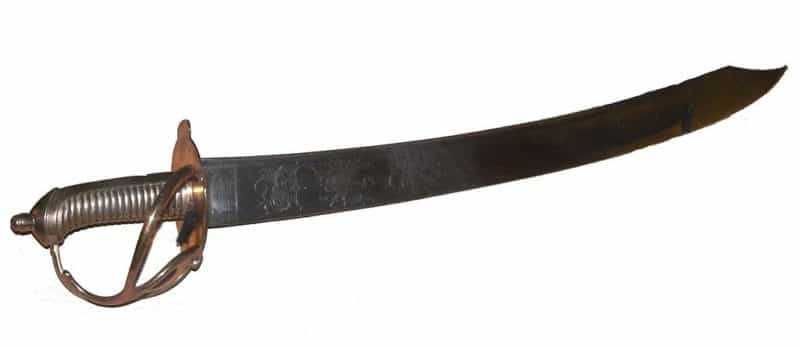
Characteristics of the Sabre Sword
The sabre features a curved and single-handed and single-edged blade that is classically linked to the cavalry soldiers. When it comes to the contemporary sabre, it was predominantly utilized as a weapon together with dress uniforms and it is said to have originated from a Middle Eastern scimitar called the Mameluke.
Sabres were swords designed and fashioned to maximize the damage dealt by cuts, usually featuring a huge handle to accommodate the wielder’s hand; it also usually had a form of defense or protection for the hand, as well as a single-edged blade that curved upwards while its edge faced downwards.
This weapon was best used for executing slicing motion but was not really convenient for stabbing compared to the straight-bladed swords; it was also considered inefficient for stabbing since the tip of the sabre is not directly lined with its grip.
However, its curved blade allowed the force of a slicing attack to be directed only to a certain area since only a portion of the blade would be in contact with its target, making the executed cut deeper but with only a small amount of force.
Different Variants of the Sabre
Below are the different kinds of sabres that have been utilized in history:
The Szabla
This is also known as the Polish Sabre and was highly popular in the Polish-Lithuanian Commonwealth during the Early Modern era; this was most especially favored by the light cavalry during the seventeenth century.
The sabre also became a popular tool in Europe which followed the Thirty Years War, and it was also a weapon adopted by the infantrymen during battles.
Particularly, the weapon served as one of the images of aristocracy and nobility, thus considering the weapon as one of the most vital pieces of a man’s traditional and classic attire. The sub-types of the Szabla sabre include the Armenian-styled Szabla, the Karabela, Hungarian-Polish Szabla, and the Hussar Szabla.
The Swiss Sabre
This type of sabre sword featured a single-edged and slightly arched blade which in the middle of the sixteenth century, was set in common sword hilts which included various designs such as re-curved quillions and / or rings, as well as knuckle guards.
In the later period of the sixteenth century, forms of specialized hilts began to appear, and often, these featured pommels that were shaped like the head of a lion or pommels that were plated with silver.
Modern Fencing Sabre
This type of sabre appears quite similar to the cavalry sabre since both had thin long straight blades that measured around thirty-five inches in length.
It was one of the three pieces utilized in fencing since it was an extremely fast-paced weapon with bouts that were depicted by swift footwork.
The Sabre Sword for Sale
For those who are searching for quality-made replicas of the sabre, one can readily purchase a sabre for sale from various online weapon shops. One can choose a sabre sword that is either fully functional or for decorative purposes depending on the needs and requisites of the individual purchasing the weapon.
Individuals who plan to utilize the sabre among all the other types of swords for cutting training or practice should definitely go for the fully functional pieces since these are thoroughly sharpened and designed specifically for this purpose.
For the decorative sabre, this specific piece is designed mainly as an adorning piece for display and it can also be great as a collectible item. The blades of decorative sabres are left dull to ensure the safety of collectors.


